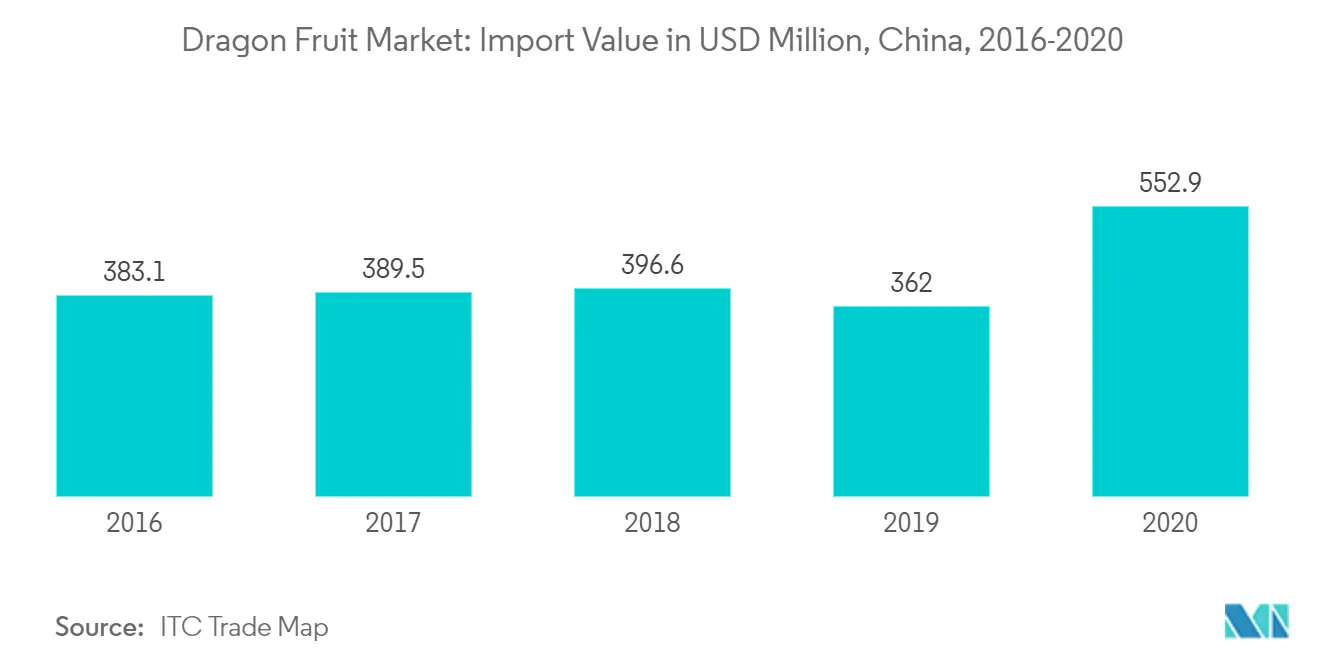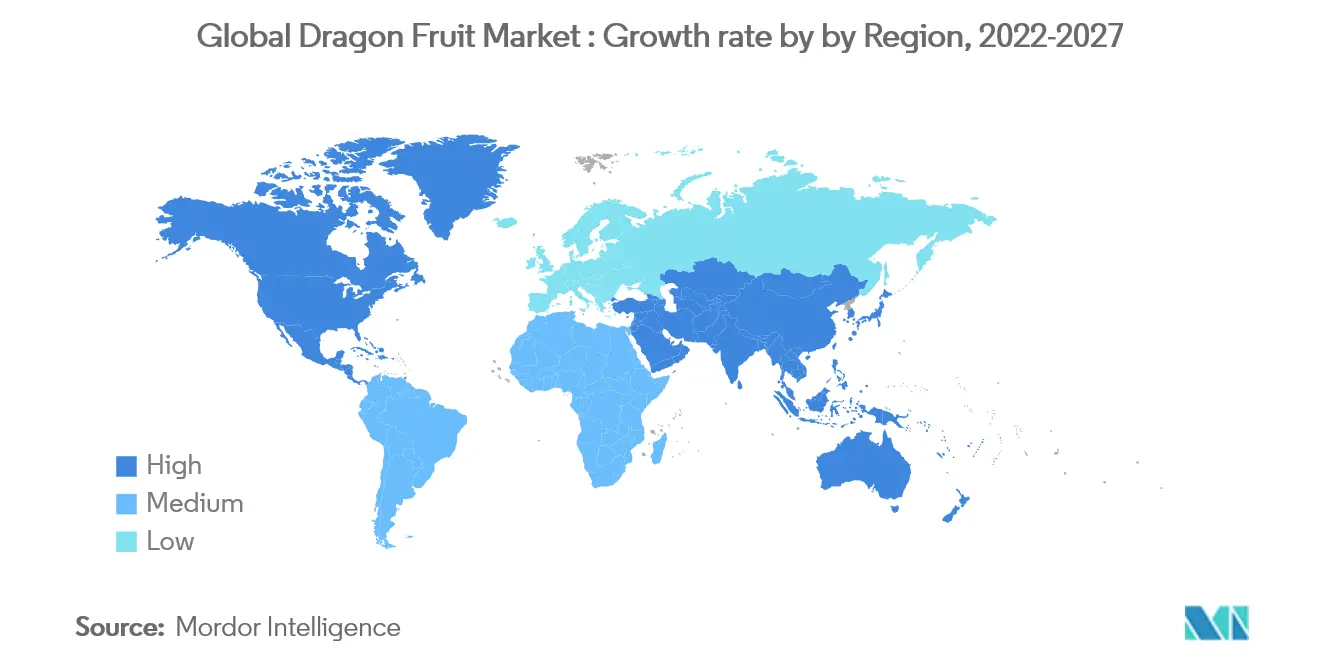Market Trends of Dragon Fruit Industry
This section covers the major market trends shaping the Dragon Fruit Market according to our research experts:
Growing Demand for Dragon Fruit in China
Dragon fruit has high water content and is a good source of iron, magnesium, vitamin B, phosphorus, protein, calcium, and fiber. The fruit's edible seeds are also nutritious and have been proved to lower the risk of cardiovascular disorders. Dragon fruit is a low-calorie fruit that is high in fiber and contains a good amount of vitamins and minerals. Owing to the aforementioned benefits, coupled with the changing diet pattern among the Chinese population, the demand for dragon fruit is increasing, thereby, escalating the imports.
The Chinese people consume most of the whole dragon fruit produced from Vietnam. According to the Ministry of Industry and Trade of Vietnam, 80.0% of the dragon fruits produced in Vietnam are exported to China, while 99.0% of dragon fruits in the Chinese market are imported from Vietnam. The demand for the Vietnamese dragon fruit is high in the Chinese market mainly due to its sizable production and high economic importance.
In May 2020, China's General Administration of Customs permitted several varieties of fresh dragon fruit from Indonesia. The dragon fruit varieties that are allowed for import include purple-fleshed dragon fruit, red-fleshed dragon fruit and white-fleshed dragon fruit. This is one of the factors that is driving the market for dragon fruit in China.

Asia-Pacific Dominates the Market
In the Asia Pacific, Vietnam, China and Indonesia are the largest producers of dragon fruit. Vietnam alone contributed more than 50.0% to global dragon fruit production and the majority of the fruit production is meant for exports rather than domestic consumption. It is categorized as a high-value crop, and the local fruit industry in Vietnam has a competitive advantage. In Vietnam, the total area under the production of dragon fruit is approximately 55,000.0 hectares in 2019 with the white flesh variety accounting for more than 95.0% of production, followed by the red flesh variety at 4.5%. Dragon fruit is mainly grown in Binh Thuan, Long An, and Tien Giang provinces with more than 48,000.0 ha being devoted to its production, annually. However, recently dragon fruit production in Vietnam is facing many difficulties, including the impact of climate change and disease emergence.
In Asia, Vietnam is a leading supplier to the Chinese market, but other markets such as ASEAN and Hong Kong have been increasingly competitive from countries such as Taiwan, Thailand, and Malaysia. Additionally, Asia is not only leading the production but also as the largest dragon fruit-consuming market, especially among the Chinese community. China is the largest consumer of dragon fruit in Asia and is also the largest in the world today.
Recently, Vietnam signed a free trade agreement with the European Union, known as the European Union-Vietnam Free Trade Agreement (EVFTA). This agreement allowed Vietnamese imports to almost trade tariff-free and enabled them to control red skin red pulp dragon fruit import prices in the region. Hence, the exports of red skin red pulp dragon fruits from Vietnam to the European Union is anticipated to grow at a faster rate during the forecast period.

